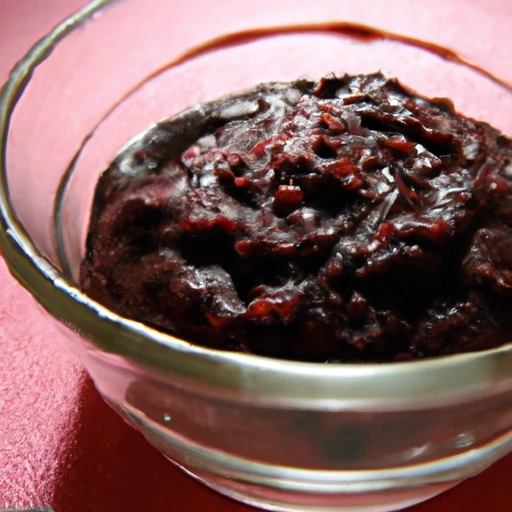Red Bean Paste
Description

Red bean paste, also known as 'anko' in Japanese, is a sweet and smooth paste made from adzuki beans. This ingredient is a cornerstone of many Asian desserts and is becoming increasingly popular in Western and European cooking. It's known for its unique, subtly sweet flavor and versatility in various culinary applications. The paste is typically made by boiling adzuki beans until soft, sweetening them with sugar, and then mashing or grinding them into a smooth consistency. The result is a thick, dark red paste that can be used in a myriad of dishes, from traditional sweets to modern culinary creations.
Common uses
Red bean paste is commonly used in sweets such as mochi, baozi, mooncakes, and taiyaki. It can also be found in savory dishes, used as a filling for steamed buns or pancakes, and is sometimes served as a topping for shaved ice or mixed with glutinous rice. The adaptability of red bean paste makes it an excellent ingredient for creative cooks looking to add a touch of sweetness to a variety of dishes.
Nutritional value
Calories
A typical serving of red bean paste (about 100 grams) contains approximately 240 calories (1004 kJ).
Protein
It provides around 7 grams of protein, contributing to muscle maintenance and growth.
Fat
Red bean paste is low in fat, with around 0.5 grams per serving.
Carbohydrates
It is rich in carbohydrates, primarily from the adzuki beans, with about 57 grams per serving.
Vitamins
It contains a variety of vitamins, including B vitamins, which are essential for energy metabolism.
Minerals
The paste is also a good source of minerals like iron and potassium, which support blood health and regulate body fluids, respectively.
Health benefits
Red bean paste is beneficial for health due to its high fiber content, which can aid digestion and control blood sugar levels. The presence of antioxidants in adzuki beans helps fight free radicals and may reduce the risk of chronic diseases. Its mineral content supports various bodily functions and overall well-being.
Potential risks
Despite its health benefits, red bean paste can be high in added sugars, which may not be suitable for those monitoring their sugar intake. As with any food, moderation is key, especially for individuals with dietary restrictions or health concerns.
Common recipes
Popular recipes using red bean paste include Japanese dorayaki, Chinese mooncakes, Korean red bean porridge, and red bean ice cream. It's also used in various pastries and buns across Asia.
Cooking methods
Red bean paste can be used as is, or it can be incorporated into recipes through baking, steaming, or as a filling for confectioneries and pastries.
Pairing with other ingredients
It pairs well with glutinous rice, matcha, vanilla, and other sweet or mild flavors. It can also complement the creamy texture of dairy products such as milk and cheese.
Summary
Red bean paste is a versatile and sweet ingredient that originates from Asia, with a rich history and presence in traditional desserts. It's gaining worldwide popularity for its unique flavor profile and potential health benefits. Whether used in sweet or savory dishes, red bean paste offers a delightful taste of Asian culinary tradition to any kitchen.